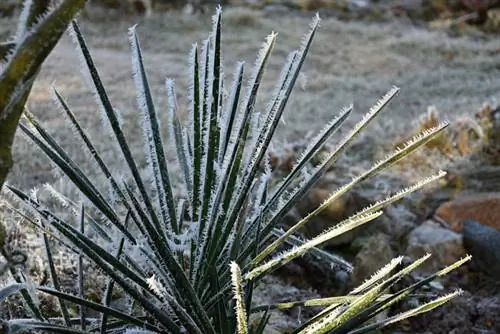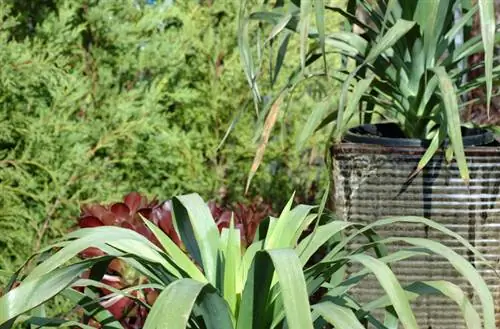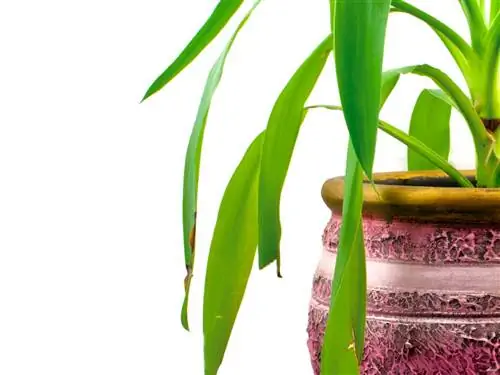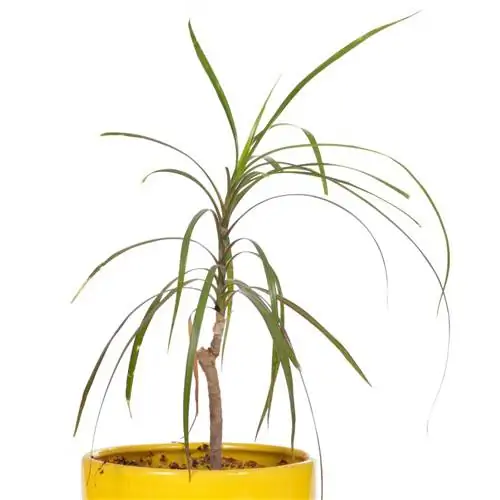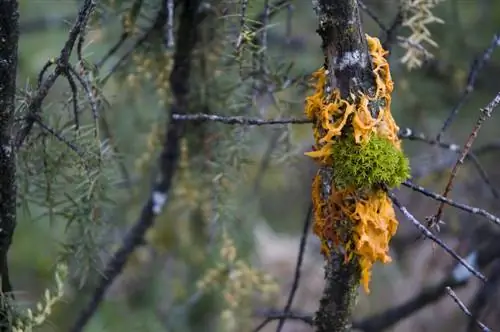- Author admin [email protected].
- Public 2023-12-16 16:46.
- Last modified 2025-06-01 06:02.
The family of yucca “palms” or palm lilies (as they are actually called botanically) includes much more than just the houseplant Yucca elephantipes. Among the approximately 50 different species there are also numerous hardy ones that can survive even deep frost in the garden. You can find out what these are and how you can prevent or treat possible frost damage in the following article.
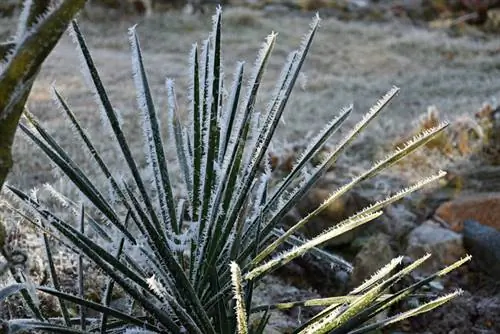
Which yucca palms are hardy and how can you protect them from frost?
Hardy yucca palm species that can tolerate temperatures down to -20°C or colder include Yucca filamentosa, Yucca gloriosa, Yucca baccata, Yucca rostrata, Yucca thompsoniana and Yucca glauca. Protect these plants in winter by mulching the soil, covering them against moisture and covering the above-ground parts with garden fleece or reed mats.
Hardy Yuccas for the Garden
Of course, the indoor yucca Yucca elephantipes is not hardy and should therefore only be left in the garden or on the balcony during the summer months. Instead, you have a number of other, no less interesting yucca species to choose from - with or without a trunk - that give your garden an exotic flair and can be left outside even over the winter. These palm lilies are hardy down to minus 20 °C and more:
| Yucca type | Common name | can tolerate frost up to |
|---|---|---|
| Yucca filamentosa | Threaded Palm Lily | - 30º C |
| Yucca gloriosa | Candle Palm Lily | - 25º C |
| Yucca baccata | Blue Palm Lily | - 30º C |
| Yucca rostrata | Big Bend Yucca | - 20º C |
| Yucca thompsoniana | - | - 20º C |
| Yucca glauca | Blue-green palm lily | - 35 °C |
Protect yucca from frost damage with light winter protection
In very cold and/or snowy winters, however, it may make sense to provide the planted yucca with light winter protection. This will prevent possible frost damage, as even hardy Yuccas can sometimes freeze. To avoid this, you can take the following measures:
- Mulch the soil around the yucca thickly with leaves, twigs, etc.
- This protects the roots from freezing.
- It can also make sense to protect the floor from excessive moisture by covering it.
- Waterlogging or permanent moisture, especially in winter, is not comfortable for the plants.
- In this case, make sure that the plant does not die of thirst.
- The above-ground parts of the yucca can be covered with garden fleece (€32.00 on Amazon), reed mats or similar.
What to do if the yucca is frozen?
However, sometimes frost damage cannot be avoided. But don't worry: As long as this is limited to the above-ground parts, the yucca will continue to sprout again and again. You should only cut out the dead or damaged plant parts in early spring.
Tip
If the yucca doesn't really want to sprout in spring, you can also dig it up. Inspect the roots carefully and see whether there is still life in the plant somewhere - separate these parts from the frozen rest and plant them again.

